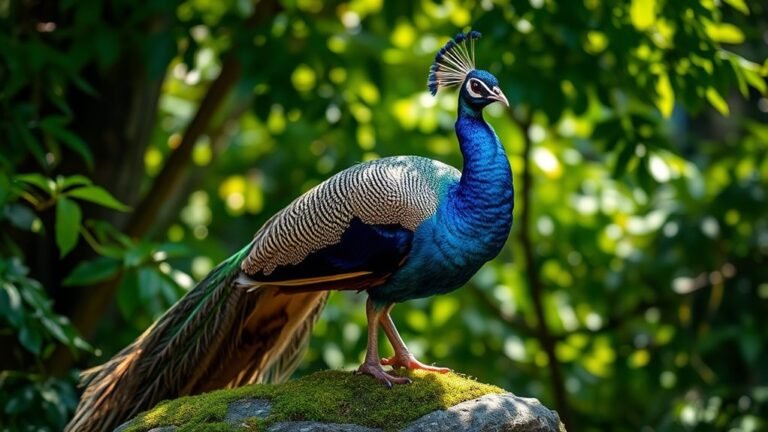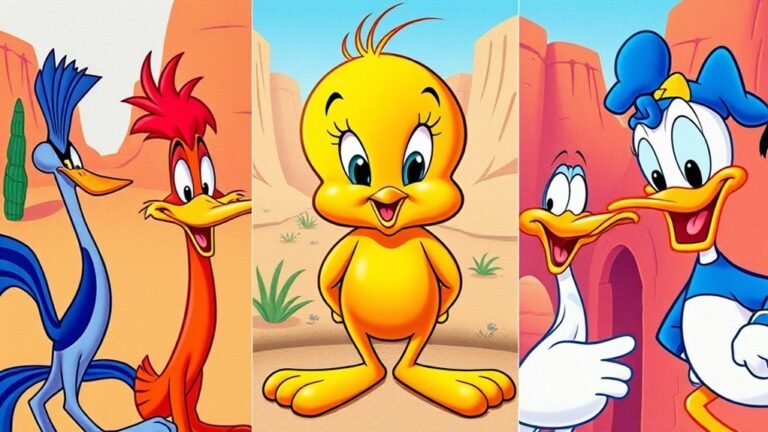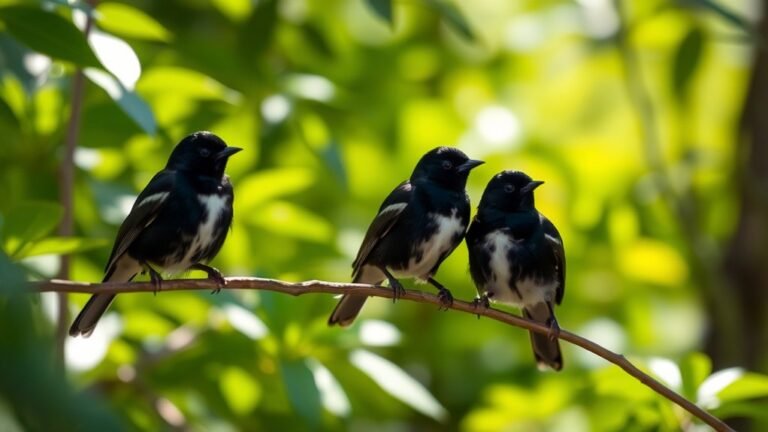Birdwatching in Washington: Notable Species to Discover
If you love birdwatching, Washington is a great place to see many different birds. Each bird has its own look and behavior that makes it special. For example, the Bald Eagle soars gracefully in the sky. On the other hand, the Marbled Murrelet is quieter and likes to hide in old trees.
Washington has both coastal and inland areas, which are perfect homes for many songbirds and raptors. Learning about these birds helps you see how they fit into the environment. It's fun to discover how bird life works in this beautiful area. Get outside, grab your binoculars, and enjoy watching!
A Quick Overview
- The Bald Eagle is a large bird of prey. You can often see it near big lakes and rivers in the spring.
- The Marbled Murrelet nests high in old trees along the coast. This shows how important it is to protect their homes.
- Great Blue Herons are skilled at catching fish. Watching them use their unique fishing tricks is a real treat.
- The Western Meadowlark sings a beautiful song. You can find it mostly in open grasslands, and its tune delights many birdwatchers.
- Anna's Hummingbird is bright and cheerful. You can bring them to your garden all year by planting native flowers and setting up feeders.
Birdwatching in Washington is fun and full of amazing birds to see!
Bald Eagle: The Majestic Bird of Prey

The bald eagle is a strong and free bird. It's one of North America's top birds of prey.
If you like birdwatching, look for bald eagle nests near big bodies of water. These nests are made of sticks and can weigh a lot, even up to a ton!
In spring, you might see bald eagles flying high in the sky or resting in trees. It's exciting to spot them. They've a very distinct look. Their heads and tails are white, and their bodies are dark brown. This makes them easy to recognize.
When you learn about where bald eagles live and how they act, you start to appreciate these amazing birds more. You also get to love the natural beauty in places like Washington.
Marbled Murrelet: The Elusive Coastal Nester
The marbled murrelet is a special bird found along the coast of Washington. This small seabird spends its time diving in the Pacific Ocean for fish and little sea creatures.
But what makes the marbled murrelet really interesting is where it builds its nests. It chooses to nest high up in old trees, usually in thick forests. This makes these trees very important for keeping the birds safe.
Sadly, the habitats of the marbled murrelet face many dangers. Because of this, it's important to work on conserving their homes.
You can help by getting involved in local conservation programs. This way, you join others in protecting these wonderful birds and their nesting places.
Great Blue Heron: The Graceful Fisher

Seeing a great blue heron in the wild is exciting for any birdwatcher. This beautiful bird has interesting ways of fishing. It often stands very still or moves slowly in shallow water to catch its food. With quick moves, it strikes at fish, showing both grace and strength.
As you watch, you'll notice its long neck and sharp beak, which are perfect for catching small fish.
Great blue herons also have fun nesting habits. They build big nests made of sticks, high up in trees or on cliffs. During nesting season, you might find a group of these herons together, making your birdwatching even better.
Take a moment to enjoy their beauty and amazing behaviors. This can help you appreciate the wildlife in Washington even more.
Western Meadowlark: The Melodious Songbird
Washington has many different places where you can find the western meadowlark. This bird is famous for its beautiful song that you can hear in the spring and summer.
Meadowlarks like open grasslands and pastures, where they look for insects and seeds to eat. You can often see them sitting on fence posts or low bushes. They use these high spots to sing their lovely songs. Their songs include cheerful whistles and trills, especially when they're trying to attract a mate.
If you pay attention, you can learn to recognize the different songs of individual meadowlarks. This connection helps you appreciate the landscape and nature more.
Spotting a western meadowlark is a fun part of birdwatching. It also helps you understand the variety of birds in Washington and how rich its ecosystem is.
Anna's Hummingbird: The Year-Round Dazzler

Anna's hummingbird is a special bird that stays in the Pacific Northwest all year. It has bright, shiny feathers and can fly quickly, which makes it fun to watch. Unlike many birds that fly south for the winter, Anna's hummingbird can handle the cold. It finds food from different flowers and feeders during this time.
Make sure to look for their interesting behavior. Male hummingbirds strongly defend their feeding areas, showing off their strength.
To attract these beautiful birds to your backyard, you can plant native flowers and put up feeders. This will make your outdoor space lively and allow you to enjoy watching these amazing creatures. Connecting with nature through Anna's hummingbird can be a joyful experience.
Caspian Tern: The Elegant Seabird
Caspian terns are beautiful seabirds. They've a tall, elegant body and large wings that help them fly well. During the breeding season, they show off their black caps on their heads and sharp, pointed bills. These features help them catch their food.
Caspian terns usually make their homes along sandy beaches and islands. They build nests on the shore during breeding time. You can hear their calls as they protect their territory.
When it comes to eating, Caspian terns are skilled fishers. They catch fish by diving into the water. Watching them dive is exciting and shows how good they're at hunting.
If you go birdwatching, seeing a Caspian tern in the wild is a special treat. It will help you enjoy and appreciate the amazing birds in places like Washington.
Black-capped Chickadee: The Friendly Backyard Bird
The Black-capped Chickadee is a small and lively bird that often comes to backyards in Washington. It has a black cap on its head and bright white cheeks. You can see it hopping between branches and hear it calling out its unique "chick-a-dee-dee-dee" sound as it searches for seeds and insects.
These friendly birds love to visit feeders in backyards. They quickly grab seeds and store them for later. Chickadees aren't shy, so they often come close to people.
To attract them, set up bird feeders and offer black-oiled sunflower seeds. Watching these charming birds can make you feel more connected to nature and bring joy to your backyard!
Pileated Woodpecker: The Impressive Cavity Nester
The Pileated Woodpecker is one of the biggest woodpeckers in North America. It has a bright red crest and bold black-and-white feathers that make it easy to spot. These birds live in old forests. They make special holes in trees called cavities. Other animals can use these cavities as homes.
You can hear their loud drumming and calls echoing in the woods. This helps you know they're nearby.
Watching them look for ants and larvae is exciting. They've unique ways of finding food, which can help you feel more connected with nature. The Pileated Woodpecker adds to the joy of birdwatching and helps you appreciate the great outdoors.
American Goldfinch: The Bright Summer Visitor
In summer, you can see American Goldfinches brightening up gardens and fields with their bright yellow feathers.
These small, nimble birds are easy to spot, especially the males. Their colorful summer looks make them a favorite for birdwatchers.
Watching goldfinches eat is fun! You can often find them at feeders filled with sunflower seeds or sitting on thistle plants.
Goldfinches have a special way of eating. They sometimes hang upside down to reach seeds, which is really cool to see.
They like to live in areas with a lot of weeds because that's where they can find food and build their nests in peace.
Sharing the experience of watching these birds with friends makes it even more special.
Pacific Wren: The Enthusiastic Vocalist
If you enjoy watching colorful birds like the American Goldfinch, you should listen to the Pacific Wren. This small bird is famous for its loud and happy songs. The Pacific Wren makes Washington's woodlands sound beautiful with its cheerful tunes. You can find them hiding in thick bushes or around the edges of forests, where they feel most at home.
- Their songs are very energetic and surprisingly loud for such a tiny bird.
- They sing all day and night, trying to outdo other birds.
- When they build nests, they use moss and ferns to help them blend in.
- They love to be near water because they like moist places.
- During mating season, they perform special courtship songs to attract partners.
Watching the Pacific Wren can help you appreciate the beauty of nature and the important roles birds play in our world.
Barn Owl: The Silent Hunter of the Night
As the sun sets over Washington's fields and forests, the Barn Owl comes to life. This owl is a true nighttime hunter. Its heart-shaped face helps it hear even the smallest sounds. This skill makes it a great predator in the dark.
The Barn Owl flies silently, thanks to special feathers that help it glide without making noise. When you see it flying, you might notice its pale feathers and dark eyes. These features let it see well at night.
Watching a Barn Owl hunt is a unique experience. It helps you connect with nature and appreciate the beautiful wildlife around you.
Frequently Asked Questions
When Is the Best Time for Birdwatching in Washington?
The best times for birdwatching in Washington are during spring and fall. This is when many birds migrate. In spring, you can see new birds returning. In the fall, you'll spot birds heading south for the winter.
During these seasons, you can watch many different species. It's a fun way to connect with nature and see how birds travel. Get outside and enjoy watching these amazing birds on their journeys!
What Equipment Do I Need for Birdwatching?
If you want to go birdwatching, there are a few things you need. First, get a good pair of binoculars. Look for ones with strong magnification and large lenses. This helps you see the birds clearly from a distance.
Next, grab a field guide. This book shows different bird species and helps you recognize them. It makes birdwatching more fun and helps you connect with nature.
With these tools, you'll be ready to enjoy birdwatching. Happy spotting!
Are There Guided Birdwatching Tours in Washington?
Yes, there are guided birdwatching tours in Washington. These tours are led by friendly local guides. They help you learn about different birds and where they live. You will also meet other people who love birdwatching. It's a great way to enjoy nature and have fun!
How Can I Identify Birds by Their Calls?
To identify birds by their calls, pay attention to the sounds they make. Start by recognizing different bird calls. Try to learn the unique notes and patterns each bird has.
You can use apps to help you listen and practice. These tools make it easier for you to learn and meet others who enjoy birdwatching too. Listening carefully will help you understand the songs of birds better!
What Conservation Efforts Exist for Washington's Birds?
To protect birds in Washington, we focus on two main things: keeping their homes safe and watching out for their populations. By joining local projects, we can help keep many types of birds alive while enjoying the beauty of nature around us. Working together with our communities makes a big difference for these lovely creatures. Let's all do our part to help Washington's birds thrive!

Luna is the passionate founder and author of Birds and You, a website dedicated to sharing her love for birds with fellow enthusiasts. Through her engaging articles and guides, she aims to educate and inspire others to explore the fascinating world of birds. When she’s not writing, you can find Luna observing birds in their natural habitats or sharing beautiful bird photography on Pinterest. Join her on this journey to celebrate and protect our feathered friends!







